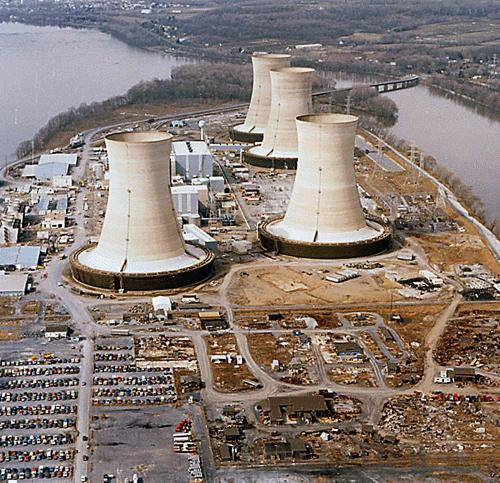|
 |
|
The Three Mile Island Nuclear Plant in Pennsylvania, the United States (XINHUA) | Second, with the decision not to use Yucca Mountain the United States needs a long-term nuclear waste strategy. The de-facto policy will continue to be the once-through fuel cycle and to store spent fuel in dry casks on-site where it is produced. But if there is an expansion in nuclear power generation and, correspondingly in volumes of spent fuel, this solution will not suffice. One solution is to expand the New Mexico Waste Isolation Pilot Plant for military waste to accept civilian nuclear spent fuel. This repository is capable of handling the waste and has been geologically stable for 250 million years. Moreover, in abandoning Yucca Mountain, the U.S. Government's legal obligation to take possession of the waste, as well as what will happen to the $22 billion levied on nuclear energy ratepayers to help pay for the cost of the repository, needs to be addressed.
Security issues will also have an impact on the degree to which a nuclear renaissance occurs. In a scenario with expanded nuclear power capacity, there will be increased production, movement, and storage of nuclear materials, and thus a corresponding need to ensure the safety and security of facilities, equipment, and modes of transportation from sabotage, theft, and terrorism. The first Nuclear Security Summit convened by President Obama last month in Washington D.C. was important in taking the first small but necessary steps to address the security of nuclear materials.
Recent developments highlight how safety concerns continue to pose major challenges for the U.S. nuclear industry. In February, the Vermont State Senate voted to block a license extension for the Vermont Yankee nuclear plant, citing a tritium leak, incorrect testimony from plant owners, and the 2007 collapse of a cooling tower as major reasons for the decision. This was followed in early April by a New York state decision that the water cooling system at two units at the Indian Point nuclear plant violates the federal Clean Water Act and rectification of these issues will be a condition for the relicensing of both units in 2013 and 2016, respectively.
While the licensing and regulatory process for building nuclear plants has been streamlined since the 1970s and 1980s in an effort to reduce costs and delays, as well as to improve safety—for example, with the implementation of combined construction and operating licenses, issuance of early site permits, and certifications of standard reactor designs—challenges still remain. The decline in nuclear construction in the United States since the late 1970s has led to current shortages in suppliers, some material inputs, and skilled personnel.
Finally, in a world of expanding nuclear power capacity there are increasing concerns over nuclear proliferation—the acquisition, production or diversion of nuclear material for weapons purposes. The examples of North Korea and Iran remind everyone of the continued and enhanced vigilance required to ensure nuclear non-proliferation.
All of this illustrates the question of nuclear energy policy is being re-framed—correctly in our view—as part of a larger picture. Nuclear power's role has to be viewed as part of a comprehensive policy approach that addresses the main challenges of nuclear energy—cost, waste, safety and security, and proliferation—as well as meeting energy demand and climate change goals—and all this while relying on market-based solutions to the greatest extent possible. This is a formidable challenge, but the only way that a nuclear "renaissance" can occur.
Charles K. Ebinger is director of the Energy Security Initiative at the Brookings Institution. John P. Banks is a nonresident fellow in the Energy Security Initiative and adjunct professor at the School of Advanced International Studies at Johns Hopkins University
(The viewpoints in this article do not necessarily represent those of Beijing Review) |
